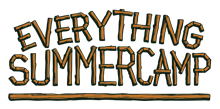Hey, Light Lovers!
We offer some pretty cool products here at Everything Summer Camp. And the history behind the cool things we sell typically have just as cool of an origin as we peel back the years to discover how footlocker trunks looked in their beginning, what people used to brush their teeth before there was the American Dental Association, or the story of how stuffed animals came to be.
 Today let’s take a look at the awesome Camp Bunk decoration we carry from iScream called the DIY Neon-Effect Light. While this is not true neon light, it looks cool and lets you spell out anything you can with three meters pink, neon effect flex! Check it out by clicking right here. So when were these interesting form of lights invented?
Today let’s take a look at the awesome Camp Bunk decoration we carry from iScream called the DIY Neon-Effect Light. While this is not true neon light, it looks cool and lets you spell out anything you can with three meters pink, neon effect flex! Check it out by clicking right here. So when were these interesting form of lights invented?
Although, they wouldn’t completely be invented for another 47 years, our story begins in 1855 when one scientist Heinrich Geissler was experimenting with different types of light. Not only was Mr. Heinrich a physicist, he was a glassblower as well. Combining his passions, he was experimenting with what would happen if electricity passed through gas that was contained in a glass tube. Mr. Heinrich, however, is not the inventor of neon lights.
Neon is a gas and one that had not been discovered until 1898. It’s a very rare gas that is collected by a couple processes called liquefaction and then fractional distillation. Georges Claude, a French inventor, engineer, and chemist

was the very first scientist to experiment with neon gas in a Geissler tube. He experimented with lots of gases.
The color of the light produced depends on the gas inside the glass tubes. Lights that contain neon gas are dark orange. Hydrogen makes red lights and helium makes yellow. Mercury glows blue. But, since it all started off with the dark orange glow of electrified neon, all other lights have adopted the ‘neon’ name.
The glassblower, Heinrich Geissler would have marveled at the art form that came from his early experiments with his Geissler tube. To make all the neon signs and images that you see outside downtown shops, malls, gamerooms, and elsewhere, the glass is heated to a specific temperature that it can be handled with tools that people use to bend and reshape the glass to form letters or images.
Have fun with the iScream DIY Neon-Effect Light (no glassblowing or bending involved). You can share you knowledge now, next time you encounter a “neon” light. Really impress your company and let them know that that blue neon light is actually filled with mercury in gas form! Until next time, Camp Fans! As always, thanks for reading!
- John

